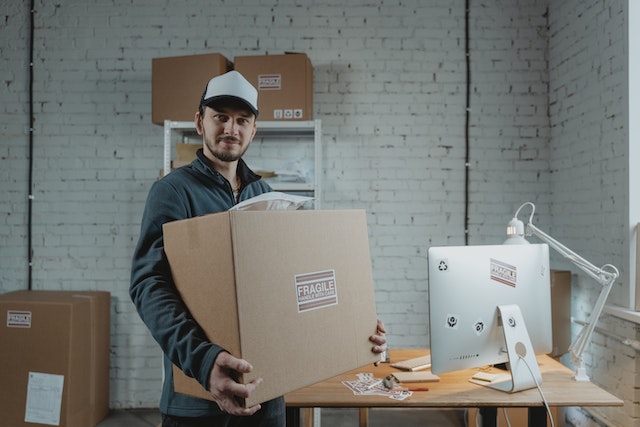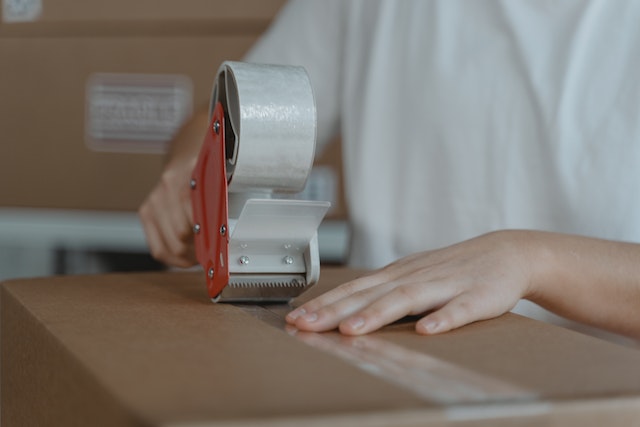How to Pack Fragile Items for a Safe Move
Moving, regardless of the distance or size of your belongings, can often seem daunting. But the challenge escalates when it comes to handling and moving fragile items. The fear of damage or breakage can bring additional stress and worry. Fragile items often carry not just monetary value but also sentimental value – Grandma’s china, a treasured painting, or a beloved antique lamp. The very thought of these precious items getting damaged can make anyone apprehensive about the move. Recognizing this, it is crucial to pack fragile items appropriately for a safe move, especially when packing for a long-distance move where items will be subjected to a greater level of jostling and vibrations during transit.
By taking extra precautions and following specific strategies, you can ensure that your fragile items reach their new home safely. This comprehensive guide is designed to assist you with just that. It covers everything from identifying your delicate items, getting the right packing materials, and executing a step-by-step packing process, to special tips for specific items and common mistakes to avoid. You'll be equipped with the knowledge to pack your fragile items like a pro and make your move a worry-free experience.
Pack Fragile Items: Identify Your Items
Before initiating the packing process, it's crucial to accurately identify what constitutes a fragile item. Fragile items extend beyond just glass and ceramics; they can include electronics, artwork, mirrors, antiques, and even certain pieces of furniture. The process of identifying these items is more than just a labeling exercise. By classifying your belongings carefully, you establish a system that ensures each item receives the required care and attention during packing and moving. This deliberate categorization is a key step towards safeguarding your valuable possessions during transit.

Careful hands ensure fragile items reach their destination intact.
Essential Packing Materials for Fragile Items
Acquiring the right packing materials is imperative to ensure the highest level of protection for your fragile items. Start with sturdy boxes of various sizes - the rule of thumb is to use smaller boxes for heavier items. Bubble wrap is another essential; it provides a protective cushion, especially for glassware and ceramics. Packing paper or newspaper can be used for additional padding and to fill voids in the boxes, preventing items from shifting during transit. Quality packing tape is required to securely seal the boxes, and marker pens for clear labeling. An easy packing strategy for labeling moving boxes is also crucial. Mark each box with its contents and room destination to facilitate a smoother unpacking process and ensure fragile items receive the necessary care during handling and transportation.
Once you understand what you need, it's crucial to purchase these supplies from reliable sources—retailers such as U-Haul, Home Depot, and Lowe's offer various high-quality packing materials. You can also explore online platforms like Amazon, which offer the convenience of home delivery. If you're interested in sustainable options, EcoBox and GreenCell Foam provide eco-friendly packing materials that don't compromise on protection.
A Step-by-Step Guide to Pack Fragile Items
Ready to start packing? Great! Let's dive into the step-by-step process of preparing, protecting, and securing your fragile items. By adhering to this process, you can ensure a seamless move with zero casualties.
Preparatory Steps: Clean and Disassemble
The first step in preparing your fragile items is to clean them thoroughly. Dust and other particles can scratch surfaces during the move, especially for items made of glass or delicate materials. Use appropriate cleaning agents and ensure each item is dry before proceeding. The next part of the preparation involves disassembly. Break down larger items into smaller parts, if possible. This not only makes the item easier to handle but also reduces the risk of damage during transit.
Protective Measures: Wrapping and Cushioning
Once your items are cleaned and disassembled, the next step is to wrap them carefully. Use bubble wrap generously to pack fragile items like glassware, ceramics, and delicate electronics. For example, be careful when packing glass jars; ensure all parts of the item are well covered. For added protection, use packing paper or newspaper to fill in gaps and provide cushioning. Remember, the goal is to prevent movement within the box that can lead to damage.

Pack fragile items like glassware with precision for a safe move.
Securing: Boxing and Sealing
After your items are wrapped and cushioned, it's time to box them up. Choose a box that fits the item comfortably without too much extra space. Place the wrapped item inside and fill any remaining space with additional packing paper or bubble wrap to avoid shifting. When you're satisfied with the packing, seal the box with strong packing tape. Reinforce the bottom of the box with extra tape for added security.
Labeling: Clear Marking for Safe Handling
The final step is to label each box clearly. Mark the boxes as 'Fragile' and 'This side up' to ensure careful handling during the move. It's also beneficial to indicate the contents of the box to help with unpacking and organizing at your new home. Using color codes or numbers can be an effective system for easy identification.
Special Tips for Specific Items
To ensure safety, pack fragile items like glassware and ceramics individually with bubble wrap, and place them vertically in padded boxes. If possible, electronics should be wrapped in anti-static bubble wrap and snugly packed in original boxes. Artwork and mirrors can be protected using corner protectors, bubble wrap, and specialized boxes or crates. For antiques, consider using foam wrap and custom crates to provide an extra layer of protection.

Ensure the protection of fragile items with secure tape during packing.
Hiring Professionals: When and Why
If you're dealing with a large number of fragile items, especially antiques or high-value pieces, it might be worthwhile to consider professional help and prepare for the movers. Professional packers are trained in handling delicate items and have access to specialized packing materials. Hiring professionals can save time, reduce stress, and provide peace of mind that your fragile items are in safe hands.
Conclusion
Packing fragile items for a safe move requires careful preparation, proper packing materials, and attention to detail. Remember to clean and disassemble items, wrap them with cushioning, securely box and seal them, and clearly label each box when you pack fragile items. By following these guidelines, you can ensure a smooth and worry-free transition to your new home. Embrace the exciting journey ahead, and best of luck with your upcoming move!